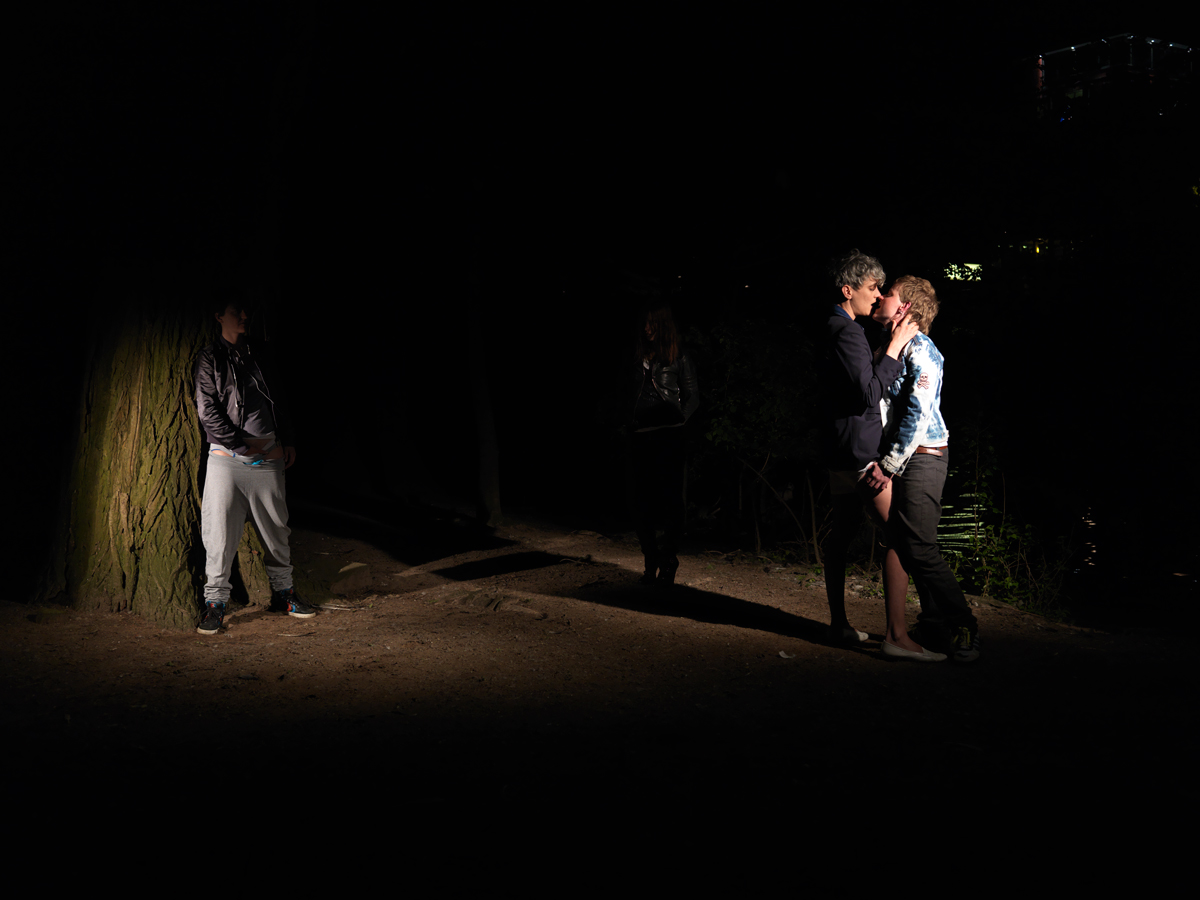2010
digital c-print
57 x 76 cm / 75 x 100 cm / 64,5 x 86 cm / 87 x 116 cm
The series of seven photographs called »Missing Images (From the Green Belt)« questions norms, respectively what is and remains outside the norm and therefore invisible: Missing Image is the title of each of these pictures that are numbered consecutively. The starting point of this work is the pose that is varied and tested in the photographs: what happens if feminine persons stand up with their legs apart – half challenging, half provoking, with a direct, offensive gaze? On an aesthetic level the series reminds us of the dramatically photographed fashion editorials, on a level of content, it deals with the problem of being outside: being in the public space, being outside (and not in a protected inside space) when being in the urban space, appropriating this urban space. »From the Green Belt« investigates the public space by visiting – in the photographs – the rims of the urban in the night. Floodlights place bright spots in the darkness, they brighten the place that is transferred into a scenery that serves a staged scene: the bank of the river, the park. Five of the pictures display the performance of the pose in different configurations – and thereby check its (sexual) potential. The staging refers to the specific choreography of encounters at places like public cruising areas, it proves that these places can be considered areas of possibilities of queer desire. This impression is supported by the intense color of the pictures. The almost lurid green of the bushes where the female protagonists linger seems to transgress the border of the picture. In harsh contrast to that two more photographs concentrate on the place and the absence of an event. The colors are faded, the images exposed longer. The surroundings become visible in the half-light. These pictures deal with the loss of the images as well as with the possibility of violence and gay bashing, that transforms cruising areas to crime scenes. The scenes and places, produced performatively in the photographs, point to the potential of real places of queer culture: even though Tess’ work is not at all documentary, her images remind us of pictures like the Pier Photographs 1975–1986 by the chronicler of New York piers, Alvin Baltrop, who has been rediscovered only lately. Like »Dad Dracula is Dead« the series of photographs resembles a test arrangement with which the analysis of and the longing for missing images is started. (Maja Figge)






